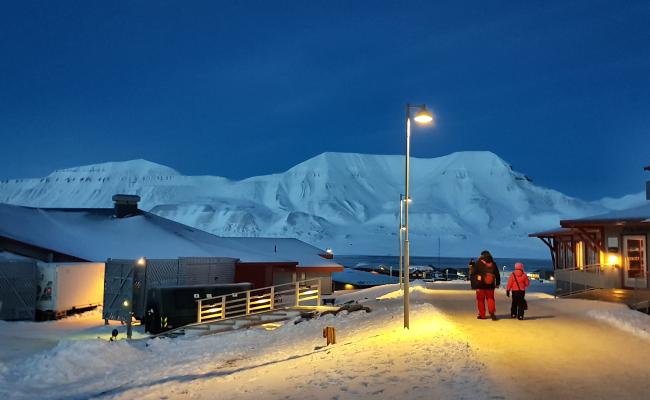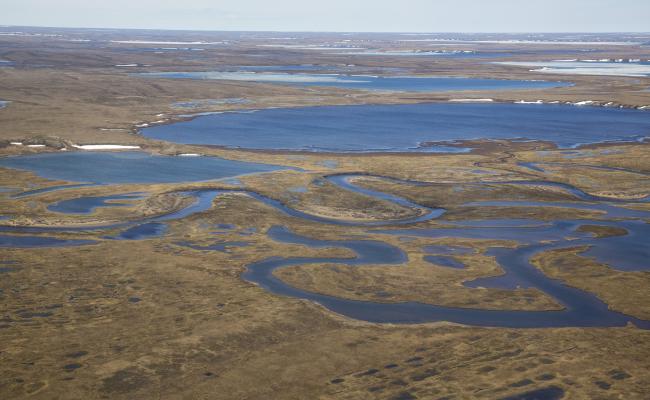Arctic Sea Ice Likely Irrevocably Lost Norwegian Scientists Conclude
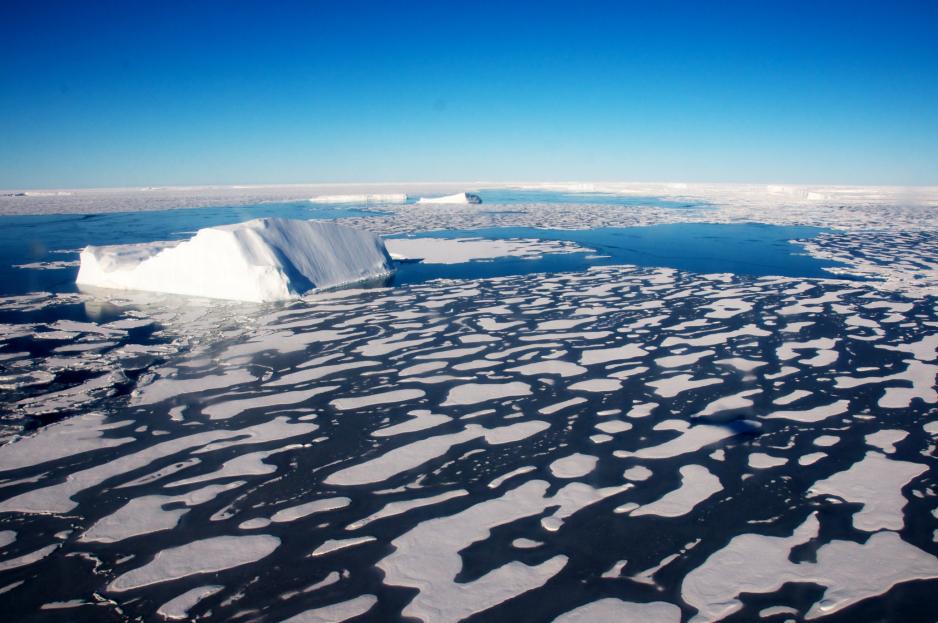
A patch of ice in the Fram Strait east of Greenland. (Source: Fruchtzwerg World under CC BY-NC-ND 2.0)
Researchers have identified the mechanism leading to the rapid collapse of sea ice extent between 2005 and 2007. More ocean heat in ice formation areas in Siberia resulted in weaker ice, which was more prone to being ejected from the Arctic Basin through the Fram Strait. This ice loss is likely irreversible, the study concludes.
A new study published in the journal Nature by scientists at the Norwegian Polar Institute in Tromsø has concluded that Arctic sea ice underwent significant changes during the unseasonably strong melt season in the summers of 2005 and 2007.
To this day the sea ice has not recovered. It remains only around half as thick as prior to 2005 and is now much younger with half the thick multi-year ice having been lost during that period.
The researchers conclude that the sea ice regime in the Arctic changed irreversibly in 2007. Arctic sea ice entered a new state following the record-melt in 2007, the scientists explain. Rather than a gradual change in sea ice pattern, 2007 represents a “stepwise shift” to a new normal.
While before 2007 sea ice was thicker and deformed, it transitioned to thinner and uniform ice cover since then. Prior to the melt event ice between 3-4 meters thick and more than 4 years old dominated the Arctic Ocean.
Following the summer of 2007 ice coverage between 1-1.5m thick and less than three years old began to be the norm. Sea ice has not recovered in the 15 years since.
“The time series clearly shows that the change of the thickness distribution has not been a gradual process but that a distinct shift from thick and deformed ice regime to thinner and more uniform ice regime occurred around 2007,” the study’s lead author Hiroshi Sumata states.
Younger ice leaves Arctic too quickly
During the summers of 2005 and 2007, Arctic sea ice was hit by a “one-two punch” the study concludes, reducing the amount of the thickest ice above 4 meters by 52 percent.
First in 2005 and then again in 2007 the ice’s residence time, i.e. how long it remains in the Arctic Basin, was reduced due to increased outflow through the Fram Strait.
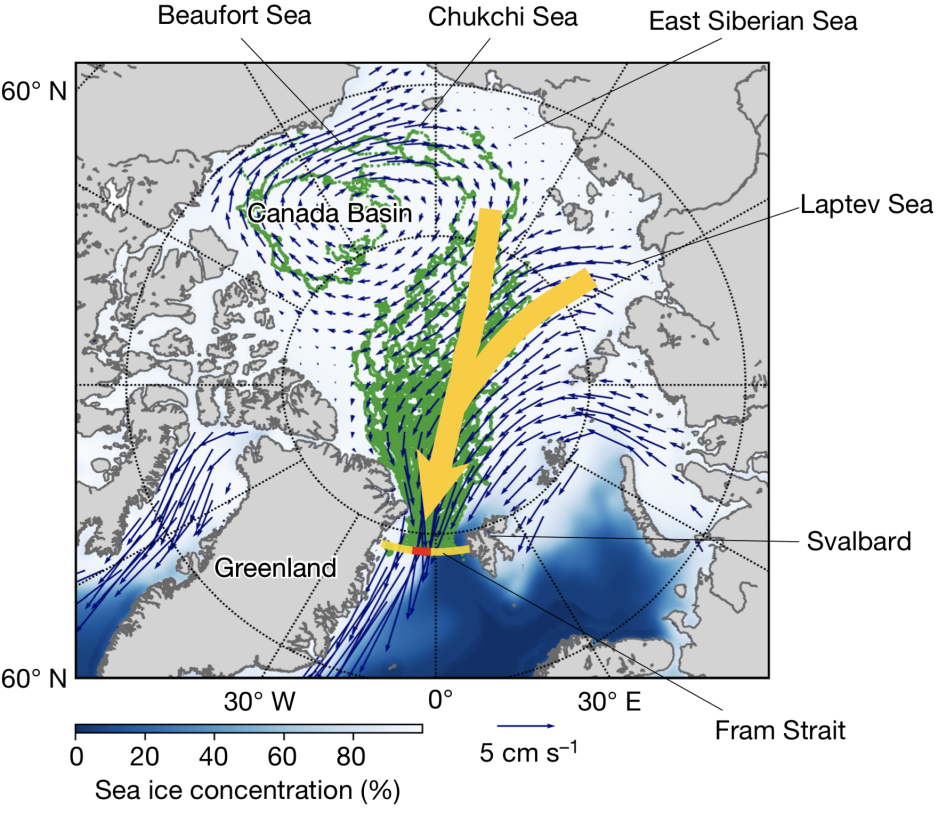
Illustration showing sea ice concentration and ice transported out of the Arctic Basin through the Fram Strait. (Source: Hiroshi Sumata, et al.)
This transition was associated with an unusually warm Arctic summer in 2005 and 2007 and the beginning of an accelerated accumulation of heat in the waters off the coast of Siberia and Alaska.
This in turn led to new ice from these waters becoming weaker and spending less time in the Arctic before being transported out of the Arctic Basin by the Transpolar Drift (TPD), an ocean current.
“Before the shift, sea ice formed in and offshore of the Siberian shelves overwintered (spent about 15 months) in this area before entering the TPD during which the ice thickened and increased its deformed fraction. After the shift, ice stayed in this area only about 6 months on average resulting in recruitment of newly formed younger ice into the TPD,” the scientists explain in the conclusion of the study.
Simply put, newly formed ice remains weaker due to rising temperatures and is thus more susceptible to being transported out of the Arctic by the TPD.
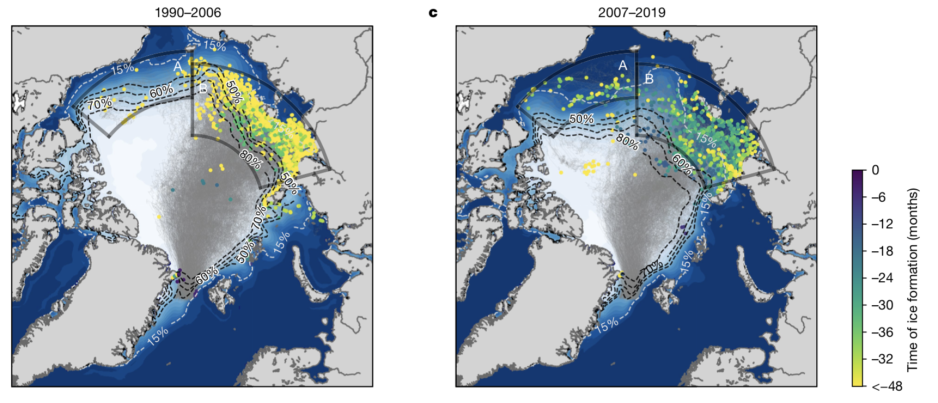
Comparison of the period from 1990-2006 and 2007-2019 of the residence time and origins of Arctic sea ice that reached the Fram Strait. The graphic shows that ice passing through the Fram Strait after 2007 is significantly younger. (Source: Hiroshi Sumata, et al.)
Monitoring ice outflow
The analysis is based on data collected from monitoring stations in the Fram Strait, the waters between Northeast Greenland and Svalbard, over the last three decades. The strait plays a crucial role as it serves as an exit point for 90 percent of Arctic sea ice.
The level of outflow and thickness of sea ice in the Fram Strait has been monitored since 1990.
The Fram Strait sees massive amounts of ice pass through every year. Between early summer and late fall between 500,000 and 800,000 square kilometers of sea ice – enough to cover Norway up to two times – leave the Arctic Ocean and enter the north Atlantic through this waterway.


